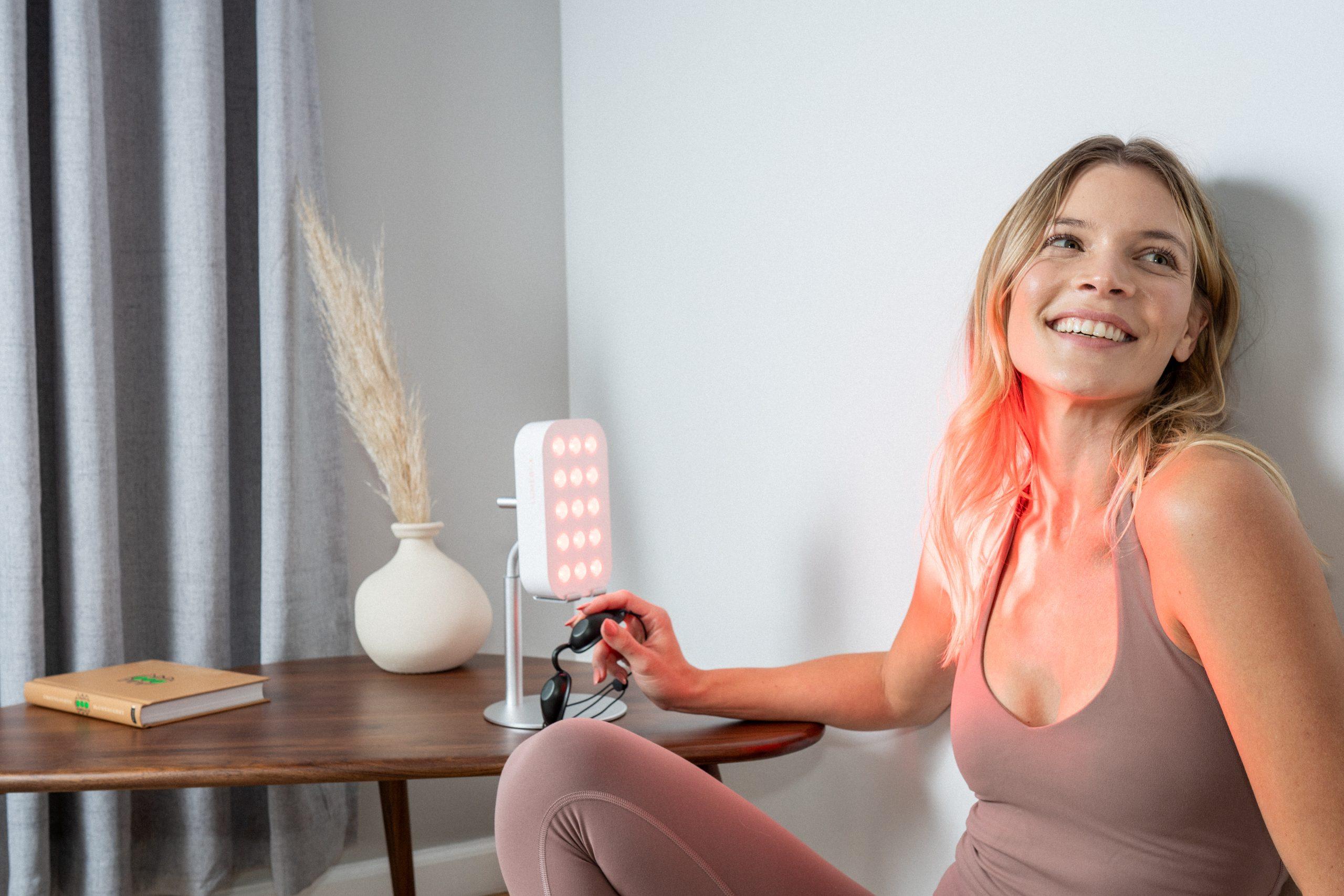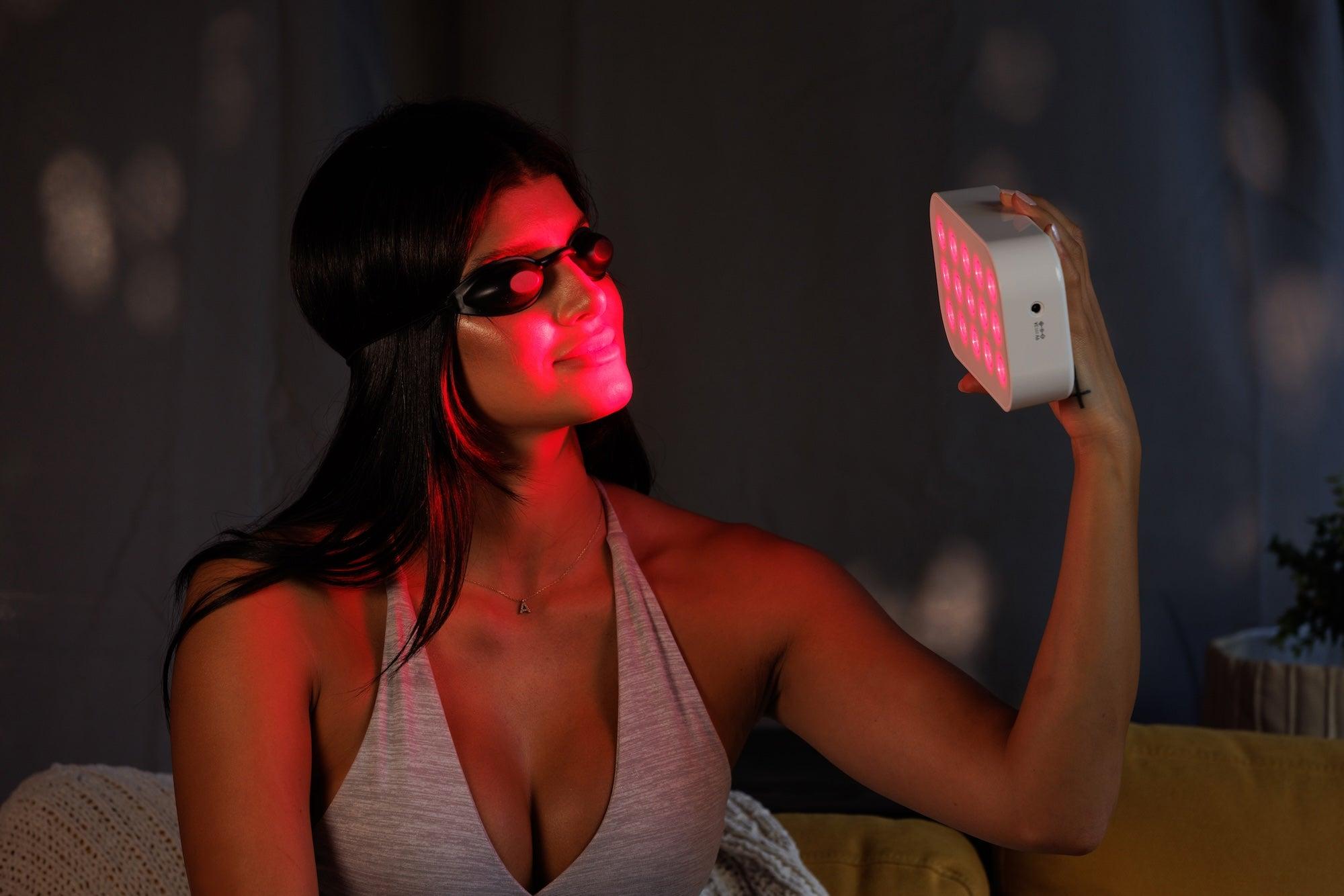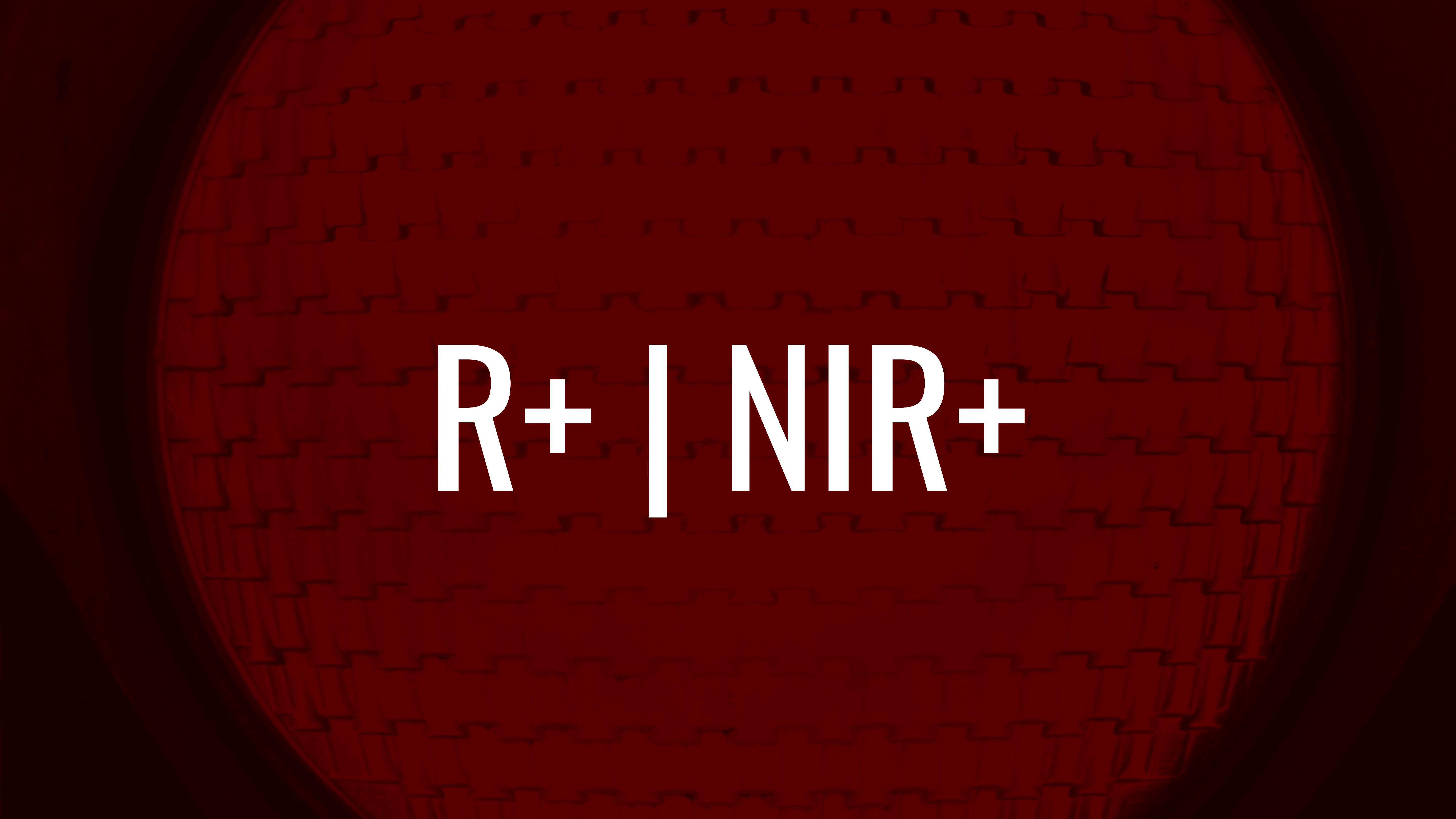As parents, the well-being of our children is always paramount. We meticulously research everything from their food to their screen time, and when new health technologies emerge, it’s natural to ask: Can kids use the LumeBox? This is a crucial question for anyone considering red light therapy (RLT) for their younger family members, and understanding the nuances is key to ensuring their safety and maximizing potential benefits. At Glow Pulse Therapy, we believe in empowering parents with clear, evidence-based information, making informed decisions about innovative wellness solutions like the LumeBox.
Red light therapy, also known as photobiomodulation (PBM), uses specific wavelengths of light to stimulate cellular function, offering a range of potential benefits from skin health to muscle recovery and mood enhancement. While its efficacy is well-documented for adults, its application for children requires careful consideration and adherence to specific guidelines. This guide will delve into what parents should know, covering safety, potential benefits, and how to approach LumeBox usage responsibly for kids.
Understanding Red Light Therapy for Children: Is It Safe?
The fundamental question concerning red light therapy for children revolves around safety. Generally, red light therapy, when administered correctly and with appropriate devices like the LumeBox, is considered non-invasive and safe. Unlike UV light, red and near-infrared (NIR) wavelengths do not cause skin damage or sunburn. However, a child’s physiology is different from an adult’s, making certain precautions and considerations essential. Their skin is more sensitive, and their developing bodies may react differently to various stimuli. This is why understanding proper usage and seeking professional advice is critical before introducing any new wellness modality.
“Our commitment at Glow Pulse Therapy is to provide accessible yet safe wellness solutions. For children, the core principle is always ‘less is more’ and ‘consult your pediatrician.’ The LumeBox is designed with user safety in mind, but parental guidance and professional medical advice are non-negotiable when it comes to young users.”
– Marcus Thorne, Founder & CEO, Glow Pulse Therapy
Key Safety Considerations for Pediatric Use
When considering if kids can use the LumeBox, parents must prioritize safety above all else. Here are the primary safety considerations:
- Eye Protection: This is perhaps the most critical aspect. While red and near-infrared light are generally safe for the eyes at therapeutic doses, direct or prolonged exposure to the bright LEDs can be uncomfortable and potentially harmful, especially for developing eyes. The LumeBox comes with protective eyewear, which must be used by children during every session. Ensure they fit properly and are worn throughout the entire duration.
- Dosage and Duration: Children typically require significantly shorter exposure times and lower intensities than adults. Their smaller body mass and more sensitive skin mean that less light is needed to achieve a therapeutic effect. Overexposure, while unlikely to cause severe harm, can lead to discomfort or negate potential benefits. Always start with the lowest recommended settings and shortest durations.
- Temperature Control: LumeBox devices generate very little heat, but it’s important to monitor a child’s skin temperature during a session to ensure they remain comfortable.
- Supervision: Children should never use the LumeBox unsupervised. An adult must always be present to ensure proper usage, monitor for any discomfort, and ensure eye protection is worn.
- Device Placement: Ensure the LumeBox is placed securely and cannot be knocked over. Keep the device away from water and supervise children around the power cord.
- Medical Conditions & Medications: Always consult a pediatrician before introducing red light therapy if your child has any existing medical conditions, is on medication, or has photosensitivity. Certain conditions or medications might be contraindications.
Potential Benefits of LumeBox Therapy for Children
While the primary concern remains “can kids use the LumeBox safely,” it’s also worth exploring why parents might consider it. For certain situations and under strict guidance, red light therapy may offer several potential benefits for children, mirroring some of the advantages seen in adults, but often requiring less intensive application.
Supporting Sleep and Mood
Many children, like adults, can struggle with sleep patterns. Red light, particularly the lack of blue light exposure, may help regulate circadian rhythms. Evening exposure to red light from the LumeBox, rather than blue light from screens, might signal to the body that it’s time to wind down, potentially aiding in better sleep quality. Improved sleep naturally contributes to a better mood and overall well-being.
Skin Health and Minor Irritations
Children are prone to minor skin irritations, scrapes, and sometimes conditions like eczema or acne in their adolescent years. Red light therapy is renowned for its skin-healing properties, promoting cellular regeneration and reducing inflammation. For superficial cuts, bruises, or mild skin conditions, low-dose LumeBox sessions could potentially aid in faster recovery and soothing irritated skin. Always consult a dermatologist or pediatrician for persistent skin conditions.
Minor Aches and Pains
Growing pains, minor sports injuries, or muscle soreness from active play are common in children. Red light therapy has anti-inflammatory and pain-relieving properties that could offer gentle relief for localized, minor aches. It’s crucial to distinguish between minor discomfort and more serious pain that requires medical attention.
Enhancing General Wellness
Beyond specific ailments, regular, safe use of the LumeBox might contribute to overall cellular health, which is foundational for a child’s growth and development. By supporting mitochondrial function, red light therapy can help cells operate more efficiently, potentially boosting energy levels and resilience.
“The versatility of red light therapy makes it appealing, but for pediatric use, we emphasize a cautious and targeted approach. If your child is experiencing persistent sleep issues or chronic skin concerns, discuss LumeBox as a complementary tool with their doctor. It’s about enhancing, not replacing, conventional care.”
– Dr. Anya Sharma, Pediatric Health Specialist at Glow Pulse Therapy
Age Recommendations and Usage Guidelines
While there isn’t a universally accepted official age for initiating red light therapy, most experts agree that very young children (infants and toddlers) should generally avoid it unless specifically recommended and supervised by a pediatrician for a diagnosed condition. For older children and adolescents, careful introduction and monitoring are key.
General Age-Based Recommendations for LumeBox Usage
| Age Group | Recommendation | LumeBox Usage Guidance |
|---|---|---|
| Infants (<1 year) | Generally NOT recommended unless under strict medical supervision for specific conditions (e.g., jaundice, as traditional phototherapy uses blue light, but red light therapy for other very specific issues might be considered by a specialist). | AVOID HOME USE. Only under direct medical guidance in a clinical setting. |
| Toddlers (1-3 years) | Not recommended for routine home use. Their inability to consistently wear eye protection and remain still makes safe application challenging. | AVOID HOME USE. Only if explicitly advised by a pediatrician for a very specific, rare condition, and only with extreme caution and professional supervision. |
| Preschool/Early School Age (4-8 years) | Consider with extreme caution and pediatrician consultation. If considering, ensure the child can understand and consistently follow instructions, especially regarding eye protection. Limit session duration and frequency significantly. | START LOW, GO SLOW. 1-2 minutes per area, 2-3 times per week. Always use provided eye protection. Strict adult supervision required. Focus on localized, minor issues. |
| Pre-teens (9-12 years) | Can be considered with pediatrician consultation. Children in this age group are generally more capable of understanding and following safety protocols, including consistent use of eye protection. Focus on targeted application for specific minor issues. | CAUTIOUS APPROACH. 2-5 minutes per area, 3-4 times per week. Ensure proper eye protection. Supervise closely. Can be useful for minor muscle aches, skin irritations, or sleep support. |
| Teens (13+ years) | Can be used similarly to adults, with parental guidance and device-specific instructions. Teens are generally mature enough to understand the benefits and risks. Still, parental supervision or guidance is recommended, especially when first introducing the LumeBox. | ADULT GUIDELINES (with discretion). 5-10 minutes per area, daily or several times per week, as needed. Emphasize consistent eye protection. Useful for acne, sports recovery, muscle pain, and overall wellness. |
 Parent explaining LumeBox usage guidelines to a child, with an emphasis on safety and age-appropriate application of red light therapy.
Parent explaining LumeBox usage guidelines to a child, with an emphasis on safety and age-appropriate application of red light therapy.
How to Introduce the LumeBox to Your Child
- Consult Your Pediatrician: This is the foundational step for determining if kids can use the LumeBox for your specific child. Discuss your reasons for considering RLT and get their professional medical advice.
- Educate Your Child: Explain what red light therapy is in simple terms, emphasizing that it’s a gentle light. Clearly communicate the importance of the protective eyewear – frame it as their “superhero glasses” for the light.
- Start Slowly: Begin with very short sessions (e.g., 1-2 minutes) and gradually increase the duration if tolerated and beneficial, always staying within the recommended range for their age.
- Make it Fun (but safe): For younger children, incorporate the session into a calming routine, perhaps before bedtime. You could play quiet music or read a story while the session is underway.
- Monitor Closely: Observe your child for any signs of discomfort, redness, or irritation during and after the session. If anything unusual occurs, discontinue use and consult your pediatrician.
- Consistency Over Intensity: Regular, short sessions are generally more beneficial than infrequent, long ones, especially for children.
When to Exercise Caution and Consult a Professional
While the LumeBox is designed to be safe, there are instances where extra caution is needed, or professional medical advice is absolutely necessary.
- Photosensitivity: If your child has any condition that causes photosensitivity (increased sensitivity to light), red light therapy should be avoided unless explicitly approved by their doctor.
- Certain Medications: Some medications can increase photosensitivity. Always check with your pediatrician about potential interactions.
- Active Skin Conditions: While red light therapy can help with certain skin issues, open wounds, active infections, or suspicious skin lesions should not be treated with the LumeBox without medical clearance.
- Eyesight Issues: Children with pre-existing eye conditions should be particularly cautious. Even with protective eyewear, consultation with an ophthalmologist or pediatrician is crucial.
- Pregnancy/Lactation (for older teens): While this article focuses on younger children, it’s worth noting that caution and professional consultation are advised for pregnant or breastfeeding teenagers.
- Undiagnosed Conditions: Never use the LumeBox to treat undiagnosed pain or medical conditions in children. It is a wellness tool, not a diagnostic or primary medical treatment device.
The Glow Pulse Therapy Commitment to Family Wellness
At Glow Pulse Therapy, our mission extends to the entire family. We understand that parents want the best for their children, and this often involves exploring innovative, natural health solutions. Our LumeBox devices are designed with ease of use and safety in mind, featuring high-quality LEDs and robust construction. However, responsibility also lies in providing comprehensive information. We firmly advocate for informed decision-making, which is why resources like this guide are central to our brand identity.
We believe that education is the first step towards empowerment. By clearly outlining when and how kids can use the LumeBox, we aim to build trust and ensure that every interaction with our products is safe and beneficial. Our support team is always ready to answer questions, but for medical advice, we consistently direct parents to their trusted healthcare providers.
Conclusion
The question, “Can kids use the LumeBox?” is met with a qualified yes: with the right precautions, appropriate supervision, and crucially, prior consultation with a pediatrician, red light therapy can be a safe and potentially beneficial complementary wellness tool for older children and adolescents. It’s not about indiscriminate use, but rather targeted application, respecting a child’s unique physiology and ensuring their utmost safety through proper eye protection, controlled session durations, and constant adult presence.
As parents, your instincts are your best guide. When combined with expert medical advice and the comprehensive information provided by Glow Pulse Therapy, you can confidently explore the potential of the LumeBox to support your family’s journey towards optimal health and well-being. Explore our extensive “Resources” section for more guides on red light therapy, or feel free to reach out to our team with any product-specific questions. Your family’s health is our priority.
Frequently Asked Questions (FAQ)
Q1: At what age can children typically start using the LumeBox?
Generally, red light therapy is considered more appropriate for children aged 9 and older, or sometimes as young as 4-8 years with extreme caution and strict pediatrician supervision. Infants and toddlers are generally not recommended for home use due to challenges with eye protection and staying still.
Q2: Is the red light from the LumeBox harmful to children’s eyes?
While red and near-infrared light are not inherently harmful like UV light, the bright LEDs can be uncomfortable and potentially taxing on developing eyes if exposed directly. It is absolutely crucial for children to wear the provided protective eyewear throughout the entire LumeBox session.
Q3: How long should a child’s LumeBox session be?
Children require significantly shorter sessions than adults. For younger children (4-8 years), 1-2 minutes per area is a good starting point. For pre-teens (9-12 years), 2-5 minutes per area may be appropriate. Teens (13+) can gradually increase to adult durations of 5-10 minutes, always starting low and slow.
Q4: Can red light therapy help my child sleep better?
Yes, some studies suggest that red light therapy, particularly in the evenings, may help regulate circadian rhythms and promote better sleep by signaling to the body that it’s time to wind down. It’s often recommended as an alternative to blue light exposure from screens before bedtime.
Q5: What are the main precautions when a child uses the LumeBox?
The main precautions include: always ensuring consistent use of proper eye protection, never leaving a child unsupervised during a session, starting with very short durations and low intensity, monitoring for any discomfort, and always consulting a pediatrician before use, especially if the child has existing medical conditions or is on medication.
Q6: Can the LumeBox treat specific medical conditions in children?
The LumeBox is a wellness device and should not be used to diagnose, treat, cure, or prevent any medical condition. While it may offer complementary benefits for general well-being or minor issues, always consult a qualified healthcare professional for any specific medical concerns or conditions your child may have.
Q7: Where can I find more information about red light therapy for family wellness?
Glow Pulse Therapy offers a comprehensive “Resources” section on our website with in-depth guides, research summaries, and FAQs related to red light therapy and its various applications. You can also contact our customer support team for product-specific inquiries.



